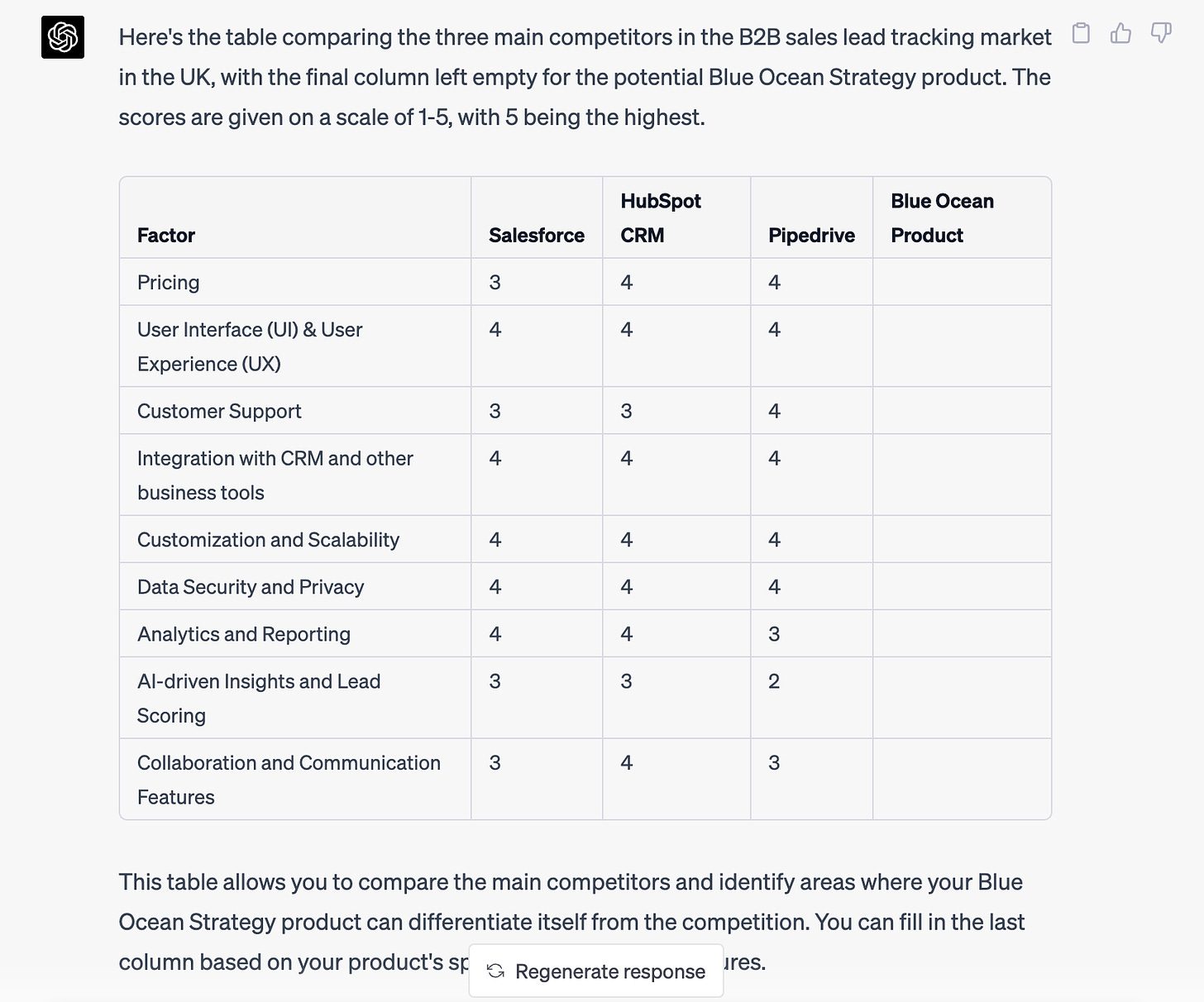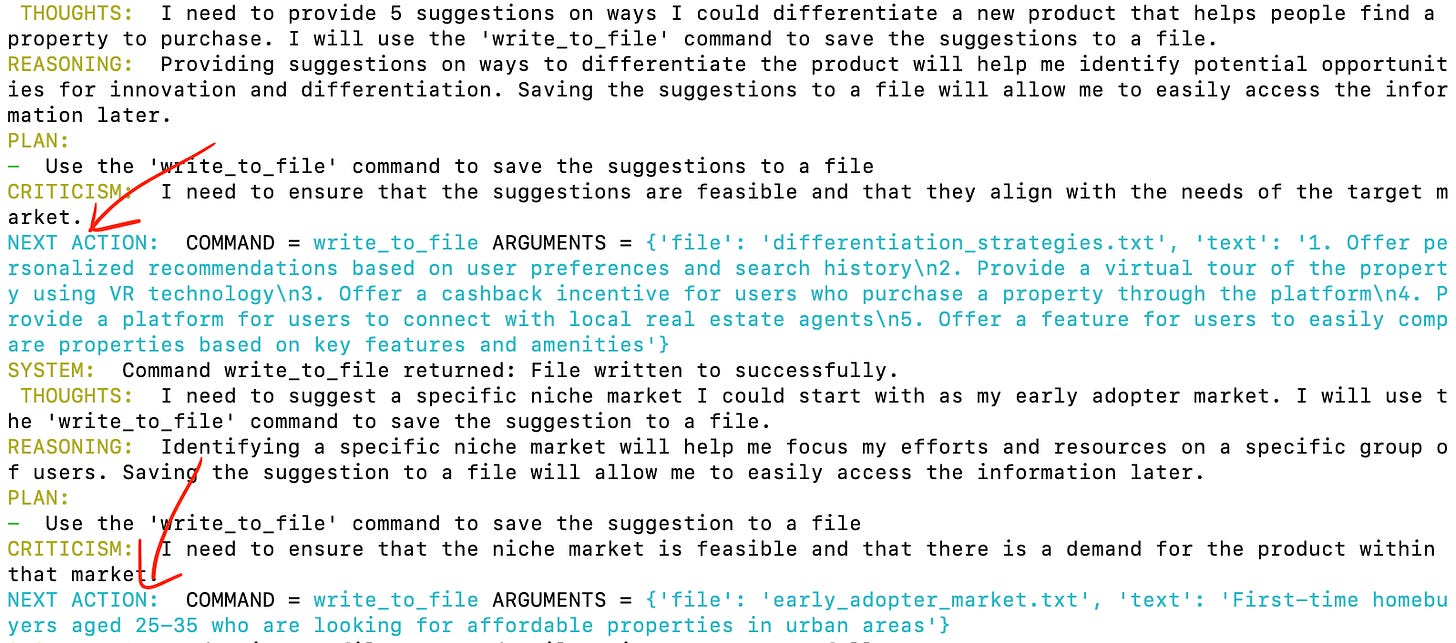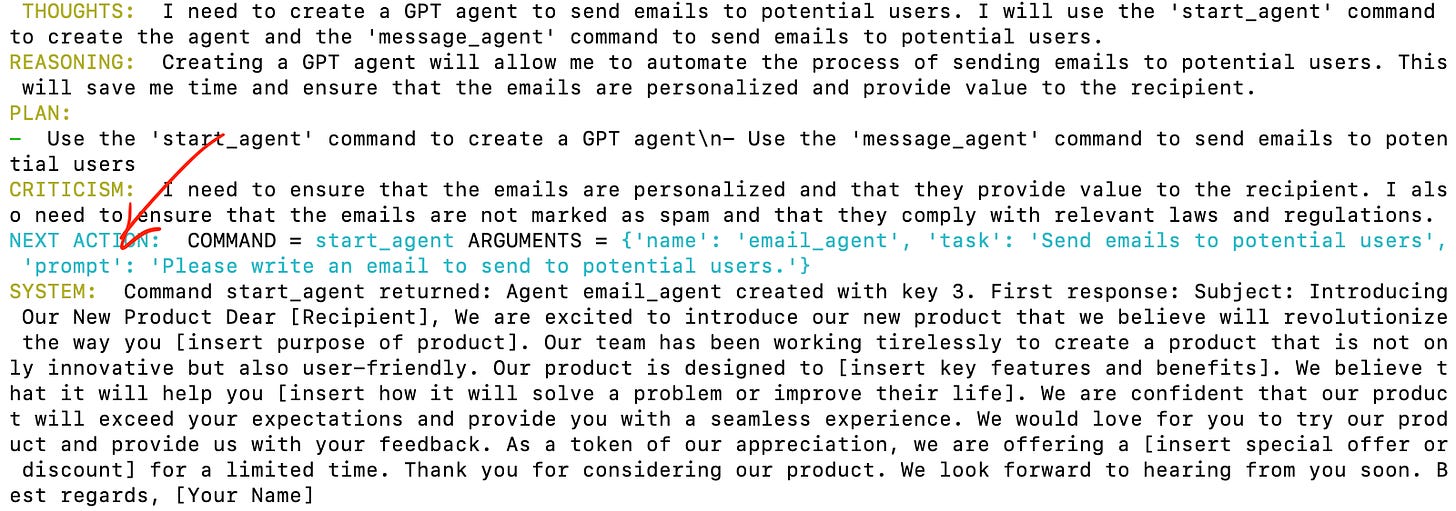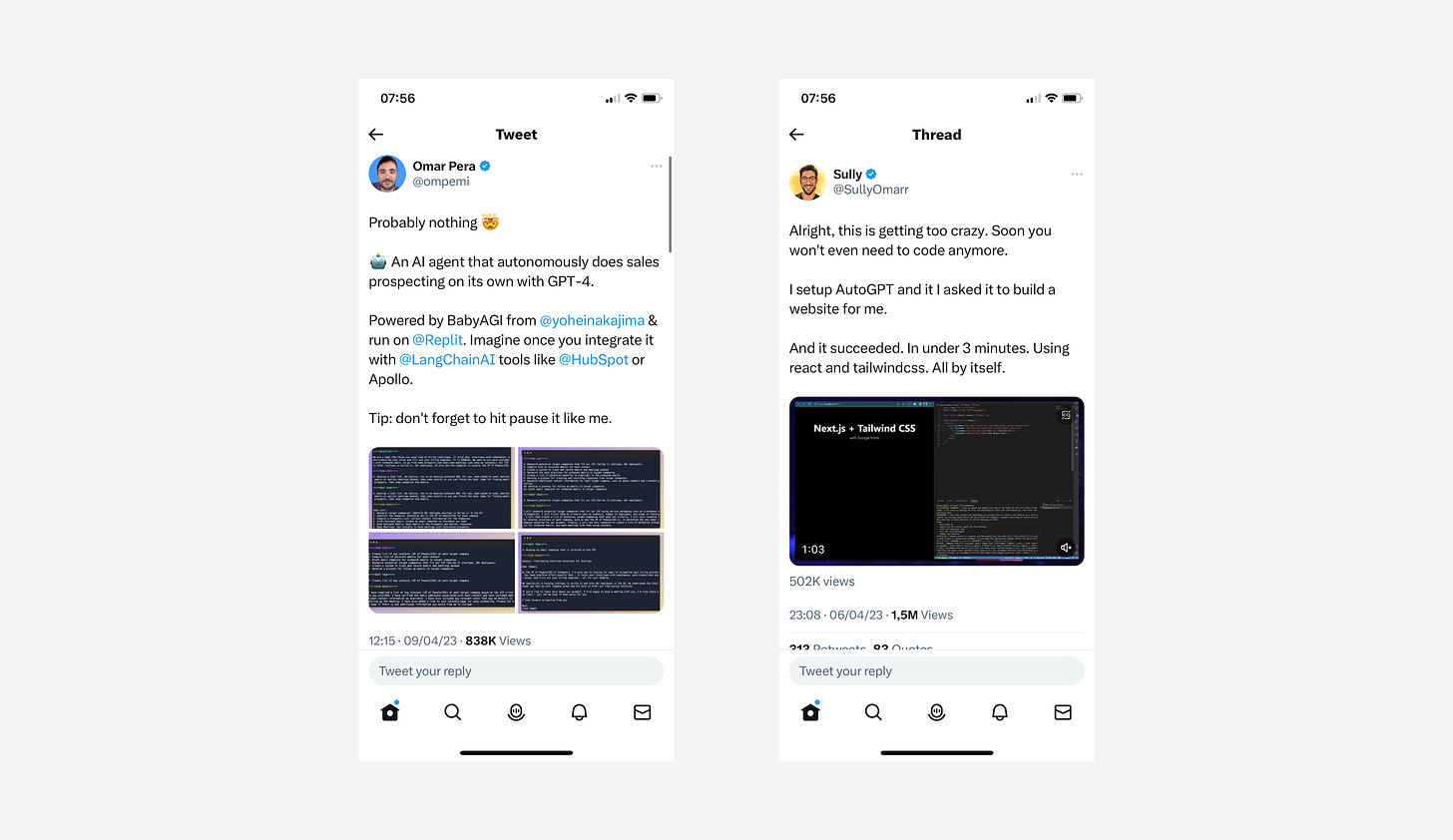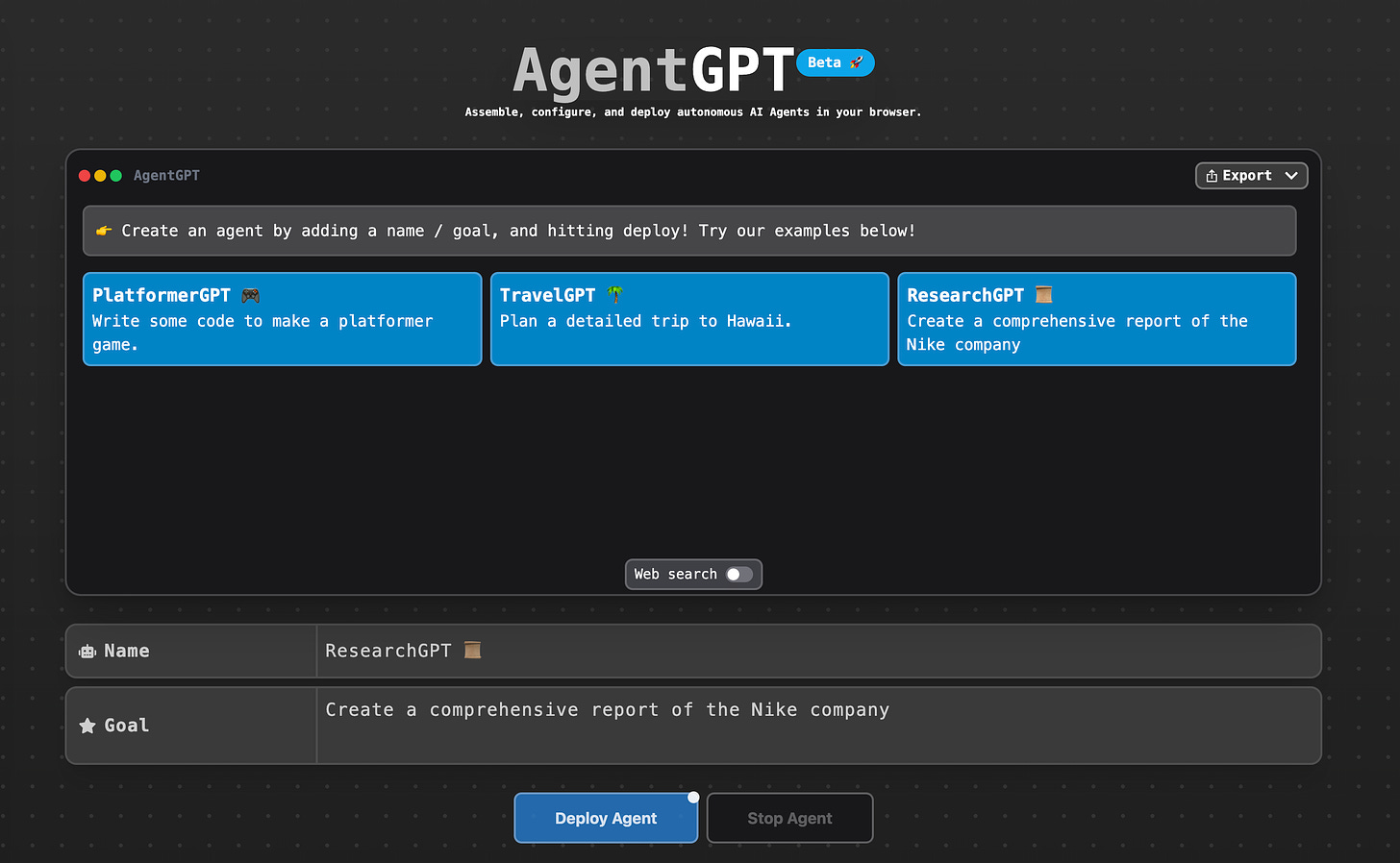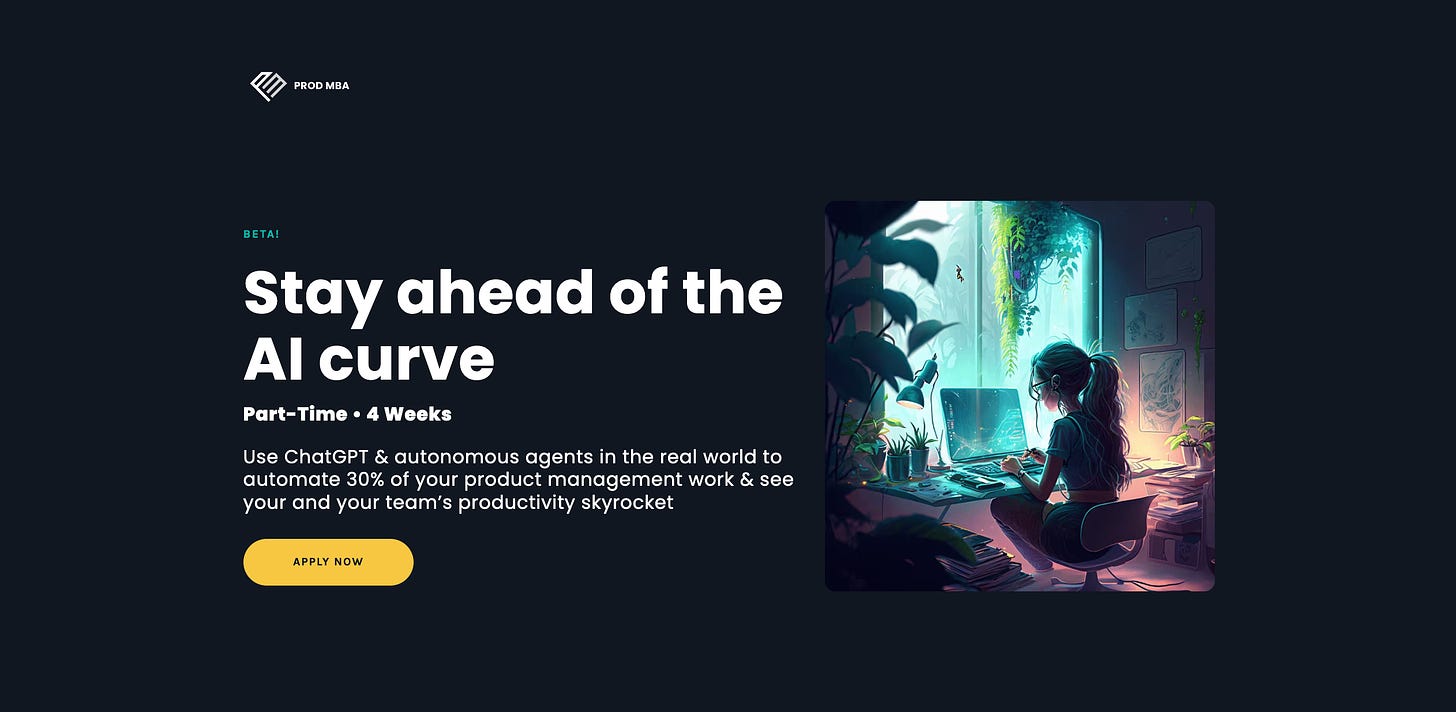Stay Ahead of the AI curve With Autonomous Agents
How Product Managers Can Save 30% Of Their Time
ChatGPT was pretty impressive.
Autonomous agents, however, are mind-blowing.
Despite only existing for 1 month, they will radically transform how you use your time.
Rather than helping you out with the odd question - such as providing suggestions for a new feature or answering a market research question - autonomous agents will genuinely 10x your time.
As a 10x Product Manager using these tools, that means your work, your day, your entire team, is gonna look a hell of a lot different in a few years.
That means you will likely operate as a one-man super team: Coming up with & validating market opportunities. Building entire products yourself (or maybe with one developer to assist). Mastering advanced product strategy to gain & maintain market share.
It also means that - if you ignore this trend - you are going to be very quickly left behind.
And all of that is happening fast.
Mind-blowingly fast.
We’re talking months, not years.
In this article, I’ll outline what autonomous agents are, why they are so transformative, then look at specific examples of where you can use these to save a minimum of 30% of your time as a PM right now (and, likely within 2 years, 10x your impact as a Product Manager).
WTF is an Autonomous Agent?
“Autonomous agents”.
Sounds pretty sexy right? Sort of like something out of the Matrix?
The reality is not quite so glamorous, but still very cool.
Now, just to be clear, I’m not going to write a technical breakdown of how the AI works. I’ll leave that to the experts (such as Matt Schlicht).
Instead, I’ll give you a basic overview of how these AAs work.
Let’s start with a definition:
“Autonomous agents are programs, powered by AI, that when given an objective are able to create tasks for themselves, complete tasks, create new tasks, re-prioritize their task list, complete the new top task, and loop until their objective is reached.”
— Matt Schilcht
The easiest way to understand this is to compare ChatGPT to AAs in practice:
A) Input
To get value from ChatGPT, you ask it a question. ChatGPT can then use reason (i.e. analyse lots of data) to spit out a logical answer based on that data.
AAs, on the other hand, ask - and answer - their own questions! For an AA to work, you provide it with a goal. The AA will then work out how to achieve that goal.
B) Output
ChatGPT provides you with a logical answer based on a mass of data.
AAs , on the other hand, can literally achieve the goal you set it in the real world. Rather than just analysing the goal & suggesting steps to solve it, it will create tasks for itself, get started with the first task, then iterate the task or task list until it achieves the goal.
It relentlessly finds pathways, working autonomously, until the goal is achieved.
Example
Imagine you want to improve your B2B sales product. Let’s say that the product is struggling because it’s not differentiated from the competition. It’s just a bit generic & no one gets any real, unique value from the product.
If we use ChatGPT, we could get some really useful market analysis if using the right prompts (see full video tutorial here):
In the near future, with an AA, we could not only ask it to do live market analysis, but then go build a landing page pitching the new differentiated product offer & reaching out to real leads to see if they are willing to sign up for that product offer.
That future is very nearly here:
How to Use Autonomous Agents: An Example
Imagine we now work for a company that helps you buy property. This product also struggles because it lacks differentiation. It’s not providing value to its customers.
Rather than taking months of manual work & meetings, let’s use an AA.
Using AutoGPT (an AA tool), we could set the following objective:
“To research competition and potential market opportunities for a product to help you buy a property”
As it’s autonomous, we would then set it a series of sequential goals that it will go off & work out how to achieve through iteration:
Now, some of these goals could be achieved with ChatGPT (like in this video tutorial).
We could, for example, have a conversation with ChatGPT to outline what it seems as our main competitors, their pros & cons, less obvious ways this problem is being solved, pricing analysis, etc.
Where AAs are really impressive though? Not just doing the research, but going & doing the work itself.
Take Goal 5, for example: “Contact 100 people from this niche”.
Let’s have a look at the output:
We have been provided with 5 possible ways to differentiate our property search product
AutoGPT has suggested a specific target market for us
AutoGPT has also drafted an email ready to send to 100 people from this suggested target market
With the right prompts, you can even automate sales prospecting (see example) & landing page building itself (see example):
Product discovery work that would usually take months now done with just a few commands in the terminal in a matter of minutes.
And there are already tools like AgentGPT to help you use an AA on a chat interface, rather than needing to code anything:
Some Limitations of AAs
Some people suggest AAs will completely transform the world within the next 1-2 years. In reality, however, these seem likely to provide more of a productivity boost over the next year, rather than being completely transformative.
So it’s important to recognise that we are still scratching the surface with these tools.
You’ll need to experiment.
You’ll realise the AAs can get stuck in endless loops.
You’ll need to learn what the right questions are to write.
It’s also essential to recognise that AAs are not as smart as a human. That doesn’t look like it will change in the short-medium term. They are ultimately very efficient assistants. Great at doing research for you, for example. Great at doing manual work for you (for example, reaching out to people to book a meeting, or organising a holiday for you).
They still require a clever human to ask the right questions. To understand the importance of fundamentals like product strategy, discovery & the fundamentals that make a great product. To do product thinking, in short.
“If we're able to get the information we need faster, will this allow us to free up time to dedicate to thinking and vs. doing? Will even better and more creative ideas surge as a consequence of investing less time on tasks that can be carried by this AI agent?”
Furthermore, team collaboration is likely to continue to be the only way to create truly diverse perspectives & creativity in driving innovation - and ultimately product success.
Finally, there are ethical & legal concerns around data privacy or irritating use cases that are unresolved. It’s easy to imagine a world, for example, where you are receiving hundreds of cold emails sent by AAs every day!
However, these tools are improving every single day. And they are increasingly able to handle any manual task we set them to do.
This means that, very soon, they will become ubiquitous in your daily work.
Potential Product Use Cases
We’re still very early in the development of these tools, yet I’ve already experimented with AutoGPT & ChatGPT to do the following:
Product discovery
Uncover problems
Find the right target market for a product
Find leads for discovery calls
Perform competitive analysis (see tutorial of this in practice here)
Product strategy
Define product vision & product strategy
Define a Unique Value Proposition & validate this
Planning a product business
Business Model & advanced product strategy planning
Building a roadmap
Defining & planning a prototype experiment
Analysing data
Customer feedback trends
Price elasticity curve
Search database & create insights
Create customer feedback chatbot
So…
Do you want to stay ahead of the curve?
Want to stay relevant & stay in a job, in fact, in the next couple of years?
You must start leveraging these tools to save 10-12hrs per week right now?
Not sure where to start?
We’ve just launched an AutoGPT + ChatGPT Bootcamp. A 4-week part-time, hands-on bootcamp to help you become a 10x Product Manager.
👉 Click here to see our curriculum & apply for our next cohort






